Optimization of Life Cycle Cost and Environmental Impact Functions of NiZn Batteries by Using Multi-Objective Particle Swarm Optimization (MOPSO)
Abstract
1. Introduction
2. Literature Review and State of the Art
3. Methodology
3.1. Exploring Evolutionary Algorithms and Particle Swarm Optimization
3.1.1. Multi-Objective Evolutionary Algorithms (MOEA)
3.1.2. Pareto Terminology
3.1.3. MOPSO Approach
- Main Algorithm
- External Repository
- Use of a Mutation Operator
- Constraint Handling
3.1.4. Main Algorithm
- Initialization of population :
- Initialize the speed of each particle:
- Evaluate each of the particles in .
- Store the positions of the particles that represent non-dominated vectors in the repository .
- Construct hypercubes within the explored search space and employ them as a coordinate system. Position particles within these hypercubes are based on their objective function values as coordinates.
- Set up each particle’s memory as a navigation guide within the search space, also storing this memory in the repository.
- WHILE maximum number of cycles has not been reached
- (a)
- Compute the speed of each particle using the following expression:
- (b)
- Equation (6) computes the new positions of the particles, adding the speed produced from the previous step.
- (c)
- If the particles cross their borders, keep them inside the search space (avoid producing solutions that do not correspond to a valid search space). When a decision variable crosses its limits, we take two actions: (1) The decision variable is multiplied by (−1) to search in the opposite direction; (2) The value of its associated boundary (either the higher or lower boundary) is taken by the decision variable.
- (d)
- Evaluate each of the particles in .
- (e)
- Update the REP contents and the hypercubes’ spatial representation of the particle population. This update involves adding all of the non-dominated areas to the repository. In the procedure, any dominating places from the repository are removed. Since the repository’s size is limited whenever it fills up, we implement a second retention criterion that prioritizes particles in sparser regions of objective space over those in densely populated ones.
- (f)
- When the particle’s current position is superior to the position stored in its memory, the position of the particle is updated using.
- (g)
- Increment the loop counter.
- 8.
- END WHILE
3.1.5. External Repository
3.1.6. Use of a Mutation Operator
3.1.7. Constraint Handling
4. Formulation Models of LCCA and LCA of NiZn Batteries for MOPSO Application
4.1. LCCA Modeling
4.1.1. Capital Cost (CI)
4.1.2. Manufacturing Cost (Cm)
4.1.3. Cost of Operation and Maintenance (CO&M)
4.1.4. End-of-Life Cost (CEoL)
4.2. LCA Modeling
4.2.1. Environment Impact from Raw Material Acquisition (EMA)
4.2.2. Environmental Impact from Manufacturing (Em)
4.2.3. Environmental Impact from Operation and Maintenance (EO&M)
4.2.4. Environmental Impact of End-of-Life (EEoL)
5. Optimizing LCCA and LCA of NiZn Batteries by MOPSO
5.1. Assumptions and Limitations
5.2. Data Related to the LCCA of NiZn Batteries
- The World Bank: data and reports on environmental and waste management.
- United Nations Environment Programme (UNEP): UNEP reports and data on global environmental issues, including waste management.
- National environmental agencies and ministries.
- Environmental organizations: Environmental Protection Agency (EPA) in the United States.
5.3. Data Related to the LCA of NiZn Batteries
5.4. Results of Applying MOPSO to Optimize the LCA and LCCA of NiZn Batteries
- “” is a Gen (Material, Country) belonging to the individual “”, and = the total number of the gens (Material, Country) defining the individual.
- = Cost of raw material acquisition and transportation belonging to the couple (Material, Country) number “” for the individual “”
- = Cost of final disposal of waste and transportation belonging to the couple (Garbage, Country) for the individual “”.
- = Environmental impact of the raw material acquisition and transport belonging to the couple (Material, Country) number “” for the individual “”
- = Environmental impact of final disposal of garbage and transportation belonging to the couple (Garbage, Country) for the individual “”.
6. Validation of the Model
6.1. Sensitivity Analysis
6.2. Robustness Regarding the Mathematical Parameters
6.3. Validation through the AHP
- Entity: Orange, Country: France, Position of the member: Engineer in charge of energy storage studies
- Entity: Chaowei Power Co. LTD, Country: China, Position of the member: Vice President‘s Assistant
- Entity: Naval Group, Country: France, Position of the member: Research and Innovation Manager
- Entity: EDP LABELEC, Country: Portugal, Position of the member: R&D Engineer and Project Manager
- Entity: ZSW, Country: Germany, Position of the member: Scientist and team leader
- Entity: SUNERGY, Country: France, Position of the member: R&D Deputy Manager
- Entity: SUPERGRID, Country: France, Position of the member: Research and development engineer
- Entity: UNIGE, Country: Italy, Position of the member: Researcher and Assistant Professor
7. Improvement of Some Sustainability KPIs
8. Limitations and Assumptions
9. Conclusions
Author Contributions
Funding
Institutional Review Board Statement
Informed Consent Statement
Data Availability Statement
Acknowledgments
Conflicts of Interest
References
- Filimonau, V. Life cycle assessment. In The Routledge Handbook of Tourism and Sustainability; Routledge: Abingdon, UK, 2015; Volume 45, pp. 209–220. [Google Scholar]
- SETAC. Guidelines for Life-Cycle Impact Assessment: Code of Practice; Society of Environmental Toxicology and Chemistry: Washington, DC, USA, 1993; Volume 1, p. 73. Available online: https://www.setac.org/resource/guidelines-lca-code-practice-1993.html (accessed on 18 June 2024).
- Fava, J.; Consoli, F.; Denison, R.; Dickson, K.; Mohin, T.; Vigon, B. A Conceptual Framework for Life-Cycle Impact Assessment; Society of Environmental Toxicology and Chemistry: Washington, DC, USA, 1993; pp. 1–160. [Google Scholar]
- Guinée, J.B.; Heijungs, R.; Huppes, G.; Zamagni, A.; Masoni, P.; Buonamici, R.; Ekvall, T.; Rydberg, T. Life Cycle Assessment: Past, Present, and Future. Environ. Sci. Technol. 2011, 45, 90–96. [Google Scholar] [CrossRef]
- ISO 14040; Environmental Assessment—Life Cycle Assessment—Principles and Framework. Internation Standard Organisation: Geneva, Switzerland, 2009; Volume 1997, pp. 1–20.
- Azapagic, A.; Clift, R. The application of life cycle assessment to process optimisation. Comput. Chem. Eng. 1999, 23, 1509–1526. [Google Scholar] [CrossRef]
- Cerda-Flores, S.C.; Rojas-Punzo, A.A.; Nápoles-Rivera, F. Applications of Multi-Objective Optimization to Industrial Processes: A Literature Review. Processes 2022, 10, 133. [Google Scholar] [CrossRef]
- Deng, C.; Li, Z.; Shao, X.; Zhang, C. Integration and optimization of LCA and LCC to eco-balance for mechanical product design. In Proceedings of the World Congress on Intelligent Control and Automation (WCICA), Chongqing, China, 25–27 June 2008; IEEE: New York, NY, USA; pp. 1085–1090. [Google Scholar] [CrossRef]
- Yu, B.; Gu, X.; Ni, F.; Guo, R. Multi-objective optimization for asphalt pavement maintenance plans at project level: Integrating performance, cost and environment. Transp. Res. Part D Transp. Environ. 2015, 41, 64–74. [Google Scholar] [CrossRef]
- Brunet, R.; Cortés, D.; Guillén-Gosálbez, G.; Jiménez, L.; Boer, D. Minimization of the LCA impact of thermodynamic cycles using a combined simulation-optimization approach. Appl. Therm. Eng. 2012, 48, 367–377. [Google Scholar] [CrossRef]
- Pieragostini, C.; Mussati, M.C.; Aguirre, P. On process optimization considering LCA methodology. J. Environ. Manag. 2012, 96, 43–54. [Google Scholar] [CrossRef]
- Yu, B.; Lu, Q.; Xu, J. An improved pavement maintenance optimization methodology: Integrating LCA and LCCA. Transp. Res. Part A Policy Pr. 2013, 55, 1–11. [Google Scholar] [CrossRef]
- Ribau, J.P.; Silva, C.M.; Sousa, J.M. Efficiency, cost and life cycle CO2 optimization of fuel cell hybrid and plug-in hybrid urban buses. Appl. Energy 2014, 129, 320–335. [Google Scholar] [CrossRef]
- Movahed, Z.P.; Kabiri, M.; Ranjbar, S.; Joda, F. Multi-objective optimization of life cycle assessment of integrated waste management based on genetic algorithms: A case study of Tehran. J. Clean. Prod. 2020, 247, 119153. [Google Scholar] [CrossRef]
- Wang, Q.; Liu, W.; Yuan, X.; Tang, H.; Tang, Y.; Wang, M.; Zuo, J.; Song, Z.; Sun, J. Environmental impact analysis and process optimization of batteries based on life cycle assessment. J. Clean. Prod. 2018, 174, 1262–1273. Available online: https://www.sciencedirect.com/science/article/pii/S0959652617327178 (accessed on 18 June 2024). [CrossRef]
- Elzein, H.; Dandres, T.; Levasseur, A.; Samson, R. How can an optimized life cycle assessment method help evaluate the use phase of energy storage systems? J. Clean. Prod. 2019, 209, 1624–1636. Available online: https://www.sciencedirect.com/science/article/pii/S0959652618334796 (accessed on 18 June 2024). [CrossRef]
- Rossi, F.; Heleno, M.; Basosi, R.; Sinicropi, A. Environmental and economic optima of solar home systems design: A combined LCA and LCC approach. Sci. Total. Environ. 2020, 744, 140569. [Google Scholar] [CrossRef] [PubMed]
- Rossi, F.; Tosti, L.; Basosi, R.; Cusenza, M.A.; Parisi, M.L.; Sinicropi, A. Environmental optimization model for the European batteries industry based on prospective life cycle assessment and material flow analysis. Renew. Sustain. Energy Rev. 2023, 183, 113485. Available online: https://www.sciencedirect.com/science/article/pii/S1364032123003428 (accessed on 18 June 2024). [CrossRef]
- Fahimi, A.; Solorio, H.; Nekouei, R.K.; Vahidi, E. Analyzing the environmental impact of recovering critical materials from spent lithium-ion batteries through statistical optimization. J. Power Sources 2023, 580, 233425. [Google Scholar] [CrossRef]
- ICRON. Optimization vs. Heuristics: Which is the Right Approach for Your Business? Available online: https://www.icrontech.com/resources/blogs/optimization-vs-heuristics-which-is-the-right-approach-for-your-business (accessed on 13 May 2024).
- Heuristic (Computer Science). Available online: https://en.wikipedia.org/wiki/Heuristic_(computer_science) (accessed on 13 May 2024).
- Huang, M.; Dong, Q.; Ni, F.; Wang, L. LCA and LCCA based multi-objective optimization of pavement maintenance. J. Clean. Prod. 2021, 283, 124583. [Google Scholar] [CrossRef]
- Lones, M.A. Metaheuristics in nature-inspired algorithms. In Proceedings of the GECCO 2014—Companion Publication of the 2014 Genetic and Evolutionary Computation Conference, Vancouver, BC, Canada, 12–16 July 2014; ACM Press: New York, NY, USA, 2014; pp. 1419–1422. [Google Scholar] [CrossRef]
- Reeves, C.; Rowe, J.E. GENETIC ALGORITHMS Part A: Background. In Genetic Algorithms: Principles and Perspectives; Springer: Berlin/Heidelberg, Germany, 2013; p. 28. [Google Scholar]
- Available online: https://www.scribd.com/document/373798705/Goldberg-Genetic-Algorithms-in-Search-pdf (accessed on 18 June 2024).
- Coello, C.A.C.; Toscano-Pulido, G.T.; Lechuga, M.S. Handling Multiple Objectives with Particle Swarm Optimization. IEEE Trans. Evol. Comput. 2004, 8, 256–279. [Google Scholar] [CrossRef]
- Schaffer, J. Multiple Objective Optimization with Vector Evaluated Genetic Algorithms. In Proceedings of the First International Conference on Genetic Algortihms; Grefensette, G.J.E., Lawrence Erlbraum, J.J., Eds.; Routledge: London, UK, 1985; pp. 93–100. [Google Scholar]
- Rosenberg, R. Simulation of genetic populations with biochemical properties. Math. Biosci. 1970, 8, 1–37. [Google Scholar] [CrossRef]
- Antoniucci, G.A.; Bentley, P.J. Analysis of the Distribution of Pareto Optimal Solutions on various Multi-Objective Evolutionary Algorithms. Bachelor’s Thesis, Universitat Politècnica de Cataluny, Barcelona, Spain, 2016; pp. 1–99. [Google Scholar]
- Zitzler, E.; Thiele, L. Multiobjective Evolutionary Algorithms: A Comparative Case Study and the Strength Pareto Approach. IEEE Trans. Evol. Comput. 1999, 3, 257–271. [Google Scholar] [CrossRef]
- Wolpert, D.H.; Macready, W.G. No free lunch theorems for optimization. IEEE Trans. Evol. Comput. 1997, 1, 67–82. [Google Scholar] [CrossRef]
- James, K.; Russell, E. Particle Swarm Optimization; Academic Press Professional (APP): Cambridge, MA, USA, 1996; pp. 1942–1948. [Google Scholar]
- Heris, M.K. Mostapha Kalami Heris, Mostapha Kalami Heris, Multi-Objective PSO in MATLAB. Yarpiz. 2015. Available online: https://yarpiz.com/59/ypea121-mopso (accessed on 18 June 2024).
- Aivaliotis-Apostolopoulos, P.; Loukidis, D. Swarming genetic algorithm: A nested fully coupled hybrid of genetic algorithm and particle swarm optimization. PLoS ONE 2022, 17, e0275094. [Google Scholar] [CrossRef]
- Papazoglou, G.; Biskas, P. Review and Comparison of Genetic Algorithm and Particle Swarm Optimization in the Optimal Power Flow Problem. Energies 2023, 16, 1152. [Google Scholar] [CrossRef]
- Yang, Y.; Liao, Q.; Wang, J.; Wang, Y. Application of multi-objective particle swarm optimization based on short-term memory and K-means clustering in multi-modal multi-objective optimization. Eng. Appl. Artif. Intell. 2022, 112, 104866. [Google Scholar] [CrossRef]
- Knowles, J.D.; Corne, D.W. Approximating the nondominated front using the Pareto Archived Evolution Strategy. Evol. Comput. 2000, 8, 149–172. [Google Scholar] [CrossRef]
- Malviya, A.K.; Malekzadeh, M.Z.; Santarremigia, F.E.; Molero, G.D.; Villalba-Sanchis, I.; Yepes, V. A Formulation Model for Computations to Estimate the Lifecycle Cost of NiZn Batteries. Sustainability 2024, 16, 1965. [Google Scholar] [CrossRef]
- Malviya, A.K.; Malekzadeh, M.Z.; Li, J.; Li, B.; Santarremigia, F.E.; Molero, G.D.; Sanchis, I.V.; Yepes, V. A Formulation Model to Compute the Life Cycle Environmental Impact of NiZn Batteries from Cradle to Grave. Energies 2024, 17, 2751. [Google Scholar] [CrossRef]
- IEC 60300-3-3-2017; Gestión de la Confiabilidad Parte 3-3: Guía de Aplicación Cálculo del Coste del Ciclo de Vida. European Committee for Electrotechnical Standardization: Brussels, Belgium, 2017.
- ISO 14044; Environmental Management-Life Cycle Assessment-Requirements and Guidelines Management Environnemental-Analyse du Cycle de Vie-Exigences et Lignes Directrices. The International Organization for Standardization: Geneva, Switzerland, 2006; Volume 2006, p. 7. Available online: https://www.saiglobal.com/PDFTemp/Previews/OSH/iso/updates2006/wk26/ISO_14044-2006.PDF (accessed on 18 June 2024).
- Nagapurkar, P.; Smith, J.D. Techno-economic optimization and environmental Life Cycle Assessment (LCA) of microgrids located in the US using genetic algorithm. Energy Convers. Manag. 2018, 181, 272–291. [Google Scholar] [CrossRef]
- Battke, B.; Schmidt, T.S.; Grosspietsch, D.; Hoffmann, V.H. A review and probabilistic model of lifecycle costs of stationary batteries in multiple applications. Renew. Sustain. Energy Rev. 2013, 25, 240–250. [Google Scholar] [CrossRef]
- Larsson, P.; Borjesson, P. Cost Models for Battery Energy Storage Systems; kTH Industrial Engineering and Management: Stockholm, Sweden, 2018; p. 31. Available online: http://www.diva-portal.org/smash/record.jsf?pid=diva2%3A1294152&dswid=2991 (accessed on 18 June 2024).
- Mehdijev, S. Dimensioning and Life Cycle Costing of Battery Storage System in Residential Housing—A Case Study of Local System Operator Concept. 2017. Available online: https://www.diva-portal.org/smash/get/diva2:1130036/FULLTEXT01.pdf (accessed on 18 June 2024).
- Schmidt, O.; Melchior, S.; Hawkes, A.; Staffell, I. Projecting the Future Levelized Cost of Electricity Storage Technologies. Joule 2019, 3, 81–100. [Google Scholar] [CrossRef]
- Poonpun, P.; Jewell, W.T. Analysis of the cost per kilowatt hour to store electricity. IEEE Trans. Energy Convers. 2008, 23, 529–534. [Google Scholar] [CrossRef]
- Mongird, K.; Viswanathan, V.; Balducci, P.; Alam, J.; Fotedar, V.; Koritarov, V.; Hadjerioua, B. An Evaluation of Energy Storage Cost and Performance Characteristics. Energies 2020, 13, 3307. [Google Scholar] [CrossRef]
- Peters, M.S.; Timmerhaus, K.D. Plant Design and Economics for Chemical Engineers, 4th ed.; McGraw-Hill: New York, NY, USA, 1991; Volume 11. [Google Scholar]
- AITEC. LOLABAT Project, Deliverable D 5.3. Report on Life Cycle Analysis (LCA) of NiZn Battery; AITEC: Valencia, Spain, 2023. [Google Scholar]
- Rahman, M.; Oni, A.O.; Gemechu, E.; Kumar, A. The development of techno-economic models for the assessment of utility-scale electro-chemical battery storage systems. Appl. Energy 2021, 283, 116343. [Google Scholar] [CrossRef]
- Schoenung, S.M.; Hassenzahl, W. Long vs. Short-Term Energy Storage: Sensitivity Analysis A Study for the DOE Energy Storage Systems Program. Analysis 2007, 42. Available online: https://www.researchgate.net/publication/268441140_Long-vs_Short-Term_Energy_Storage_Technologies_Analysis_A_Life-Cycle_Cost_Study_A_Study_for_the_DOE_Energy_Storage_Systems_Program (accessed on 18 June 2024).
- Marchi, B.; Pasetti, M.; Zanoni, S. Life Cycle Cost Analysis for BESS Optimal Sizing. Energy Procedia 2017, 113, 127–134. [Google Scholar] [CrossRef]
- McCarthy, L.; Delbosc, A.; Currie, G.; Molloy, A. Factors influencing travel mode choice among families with young children (aged 0–4): A review of the literature. Transp. Rev. 2017, 37, 767–781. [Google Scholar] [CrossRef]
- Lima, M.C.C.; Pontes, L.P.; Vasconcelos, A.S.M.; de Araujo Silva Junior, W.; Wu, K. Economic Aspects for Recycling of Used Lithium-Ion Batteries from Electric Vehicles. Energies 2022, 15, 2203. [Google Scholar] [CrossRef]
- Goedkoop, M.; Heijungs, R.; Huijbregts, M.; De Schryver, A.; Struijs, J.; Van Zelm, R. ReCiPe 2008. Potentials 2009, First edition, pp. 1–44. Available online: https://www.researchgate.net/publication/230770853_Recipe_2008 (accessed on 18 June 2024).
- Alfaro-Algaba, M.; Ramirez, F.J. Techno-economic and environmental disassembly planning of lithium-ion electric vehicle battery packs for remanufacturing. Resour. Conserv. Recycl. 2020, 154, 104461. [Google Scholar] [CrossRef]
- Mathur, N.; Sutherland, J.W.; Singh, S. A study on end of life photovoltaics as a model for developing industrial synergistic networks. J. Remanufacturing 2022, 12, 281–301. [Google Scholar] [CrossRef]
- Dangerous Goods Shipping: Types & Best Ways to Ship [2022 Guide]. Available online: https://www.container-xchange.com/blog/dangerous-goods-shipping/ (accessed on 30 April 2024).
- Transport of Dangerous Goods—WorkSafe ACT. Available online: https://www.worksafe.act.gov.au/health-and-safety-portal/safety-topics/dangerous-goods-and-hazardous-substances/transport-of-dangerous-goods (accessed on 30 April 2024).
- Shipping Dangerous Goods: Rules for Different Types of Transport—GOV.UK. Available online: https://www.gov.uk/shipping-dangerous-goods/rules-for-different-types-of-transport (accessed on 30 April 2024).
- Road Transport Price Index March 2024—Transport Exchange Group. Available online: https://transportexchangegroup.com/road-transport-price-index/ (accessed on 30 April 2024).
- Upply. Q2-2022-Ti-Upply-IRU-The-European-Road-Freight-Rate-Benchmark; Upply: Levallois-Perret, France, 2022. [Google Scholar]
- ITF. Key Transport Statistics 2023 (2022 Data). Available online: https://www.itf-oecd.org/key-transport-statistics-2023-2022-data (accessed on 30 April 2024).
- International Trade in Goods by Mode of Transport—Statistics Explained. Available online: https://ec.europa.eu/eurostat/statistics-explained/index.php?title=International_trade_in_goods_by_mode_of_transport (accessed on 30 April 2024).
- Transport—Our World in Data. Available online: https://ourworldindata.org/transport (accessed on 30 April 2024).
- Brown, J.; Englert, D.; Hoffmann, J. International Transport Costs: Why and How to Measure Them? 2021. Available online: https://blogs.worldbank.org/en/transport/international-transport-costs-why-and-how-measure-them (accessed on 18 June 2024).
- Priyanka Babu. What Is Transportation Cost and How to Calculate It? 2023. Available online: https://blog.tatanexarc.com/logistics/what-is-transportation-cost/ (accessed on 18 June 2024).
- Plane, P. What Factors Drive Transport and Logistics Costs in Africa? J. Afr. Econ. 2021, 30, 370–388. [Google Scholar] [CrossRef]
- Suarez, J.P.; Lagonera, M.J.; Ueno, R.; Sinarimbo, N. Examining Road Freight Transport Costs: A Philippine Perspective. J. East. Asia Soc. Transp. Stud. 2022, 14, 159–178. [Google Scholar]
- DELLATM Transportation Prices (Rates at Transportation, Calculation Cost Transportation, Transportation Cost, How Much Transpor-tation Price Transportation Cost and Tariffs at Transportation, Statistics). Available online: https://della.eu/price/international/ (accessed on 18 June 2024).
- Unctad. Review of Maritime Transport 2021—Chapter 3: Freight Rates, Maritime Transport Costs and Their Impact on Prices; Unctad: Geneva, Switzerland, 2021. [Google Scholar]
- Rail Transport Global Market Report 2022. Available online: https://www.globenewswire.com/news-release/2022/04/04/2415313/0/en/Rail-Transport-Global-Market-Report-2022.html (accessed on 30 April 2024).
- Comparing the Costs of Rail Shipping vs. Truck —RSI Logistics. Available online: https://www.rsilogistics.com/blog/comparing-the-costs-of-rail-shipping-vs-truck/ (accessed on 30 April 2024).
- Statista. Rail Freight Industry Worldwide—Statistics & Facts. Available online: https://www.statista.com/topics/8841/rail-freight-industry-worldwide/#topicOverview (accessed on 30 April 2024).
- Statista. U.S. Average Freight Revenue in Rail Traffic. Available online: https://www.statista.com/statistics/187274/us-average-freight-revenue-in-class-i-rail-traffic-since-1990/ (accessed on 30 April 2024).
- Carrière-Swallow, Y.; Deb, P.; Furceri, D.; Jiménez, D.; Ostry, J.D. Shipping Costs and Inflation; Elsevier: Amsterdam, The Netherlands, 2022. [Google Scholar]
- A Look at the Transportation and Logistics Costs in 2022. Available online: https://www.globalialogisticsnetwork.com/blog/2022/02/02/a-forecast-of-the-transportation-and-logistics-costs-in-2022/ (accessed on 30 April 2024).
- Statista. Price of Cargo Shipping Worldwide 2022. Available online: https://www.statista.com/statistics/1331495/price-shipping-cargo-vessels-globally/ (accessed on 30 April 2024).
- Statista. Ocean Shipping Worldwide—Statistics & Facts. Available online: https://www.statista.com/topics/1728/ocean-shipping/#topicOverview (accessed on 30 April 2024).
- International Air Transport Association. Global Outlook for Air Transport Times of Turbulence; IATA: Montreal, QC, Canada, 2022. [Google Scholar]
- Unctad. Review of Maritime Transport 2022—Chapter 3: Freight Rates and Transport Costs; Unctad: Geneva, Switzerland, 2022. [Google Scholar]
- GLEC Framework Guidelines. The Global Logistics Emissions Council Framework for Logistics Emissions Accounting and Reporting. Version 3.0. 2023. Available online: https://smart-freight-centre-media.s3.amazonaws.com/documents/GLEC_FRAMEWORK_v3_UPDATED_25_10_23.pdf (accessed on 7 November 2023).
- Porzio, J.; Scown, C.D. Life-Cycle Assessment Considerations for Batteries and Battery Materials. Adv. Energy Mater. 2021, 11, 2100771. [Google Scholar] [CrossRef]
- Gao, T.; Hu, L.; Wei, M. Life Cycle Assessment (LCA)-based study of the lead-acid battery industry. IOP Conf. Ser. Earth Environ. Sci. 2021, 651, 042017. [Google Scholar] [CrossRef]
- Saaty, T.L. The Analytic Hierarchy and Analytic Network Processes for the Measurement of Intangible Criteria and for Decision-Making. Mult. Criteria Decis. Anal. State Art Surv. 2005, 363–419. Available online: https://www.researchgate.net/publication/226772918_The_Analytic_Hierarchy_and_Analytic_Network_Processes_for_the_Measurement_of_Intangible_Criteria_and_for_Decision-Making (accessed on 18 June 2024). [CrossRef]
- Santarremigia, F.E.; Molero, G.D.; Poveda-Reyes, S.; Aguilar-Herrando, J. Railway safety by designing the layout of inland terminals with dangerous goods connected with the rail transport system. Saf. Sci. 2018, 110, 206–216. [Google Scholar] [CrossRef]
- Navarro, I.J.; Yepes, V.; Martí, J.V. A Review of Multicriteria Assessment Techniques Applied to Sustainable Infrastructure Design. Adv. Civ. Eng. 2019, 2019, 1–16. [Google Scholar] [CrossRef]
- Sánchez-Garrido, A.J.; Navarro, I.J.; Yepes, V. Multi-criteria decision-making applied to the sustainability of building structures based on Modern Methods of Construction. J. Clean. Prod. 2022, 330, 129724. [Google Scholar] [CrossRef]
- Peilin, Z.; Jian, M.; Long, Y. Research on Layout Evaluation Indexes System of Dangerous Goods Logistics Port Based on AHP. In Software Engineering and Knowledge Engineering: Theory and Practice; Wu, Y., Ed.; Springer: Berlin/Heidelberg, Germany, 2012; Volume 2, pp. 943–949. [Google Scholar] [CrossRef]
- Ghorbanzadeh, O.; Moslem, S.; Blaschke, T.; Duleba, S. Sustainable Urban Transport Planning Considering Different Stakeholder Groups by an Interval-AHP Decision Support Model. Sustainability 2018, 11, 9. [Google Scholar] [CrossRef]
- Wolf, M.-A.; Pant, R.; Chomkhamsri, K.; Sala, S.; Pennington, D. The International Reference Life Cycle Data System (ILCD) Handbook; JRC Publications Repository: Brussels, Belgium, 2012. [Google Scholar] [CrossRef]
- Observatorio Europeo de las Tecnologias Energéticas Limpias (CETO). Clean Energy Technology Observatory: Batteries for Energy Storage in the European Unión: Status Report on Technology Development, Trends, Value Chains and Markets 2022; Publications Office of the European Union: Luxembourg, 2022. [Google Scholar]
- European Patent of Sunergy: EP 3 780 244 B1. Available online: https://worldwide.espacenet.com/patent/search/family/069699936/publication/EP3780244B1?q=EP3780244B1&search_type=patents (accessed on 18 June 2024).
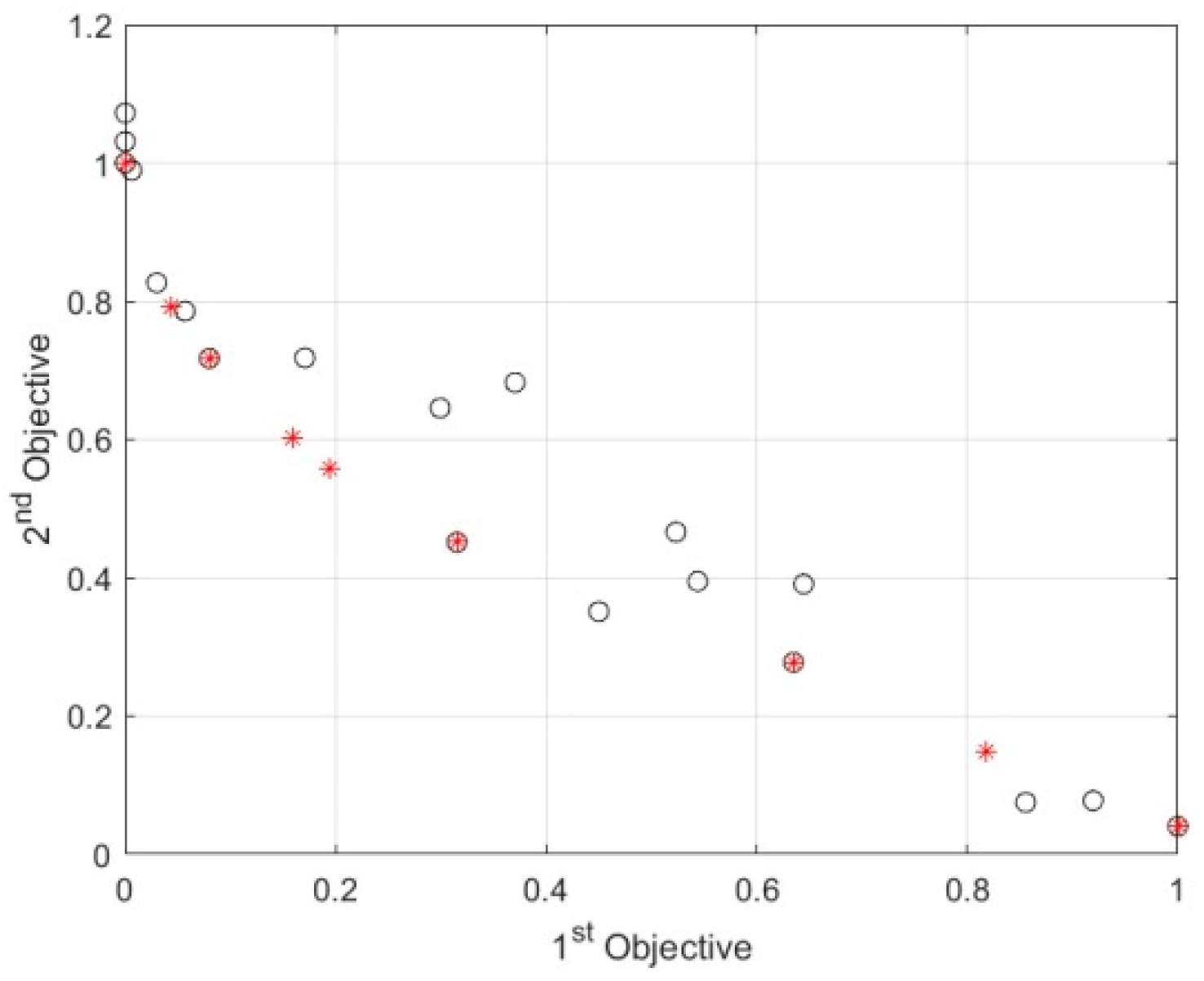

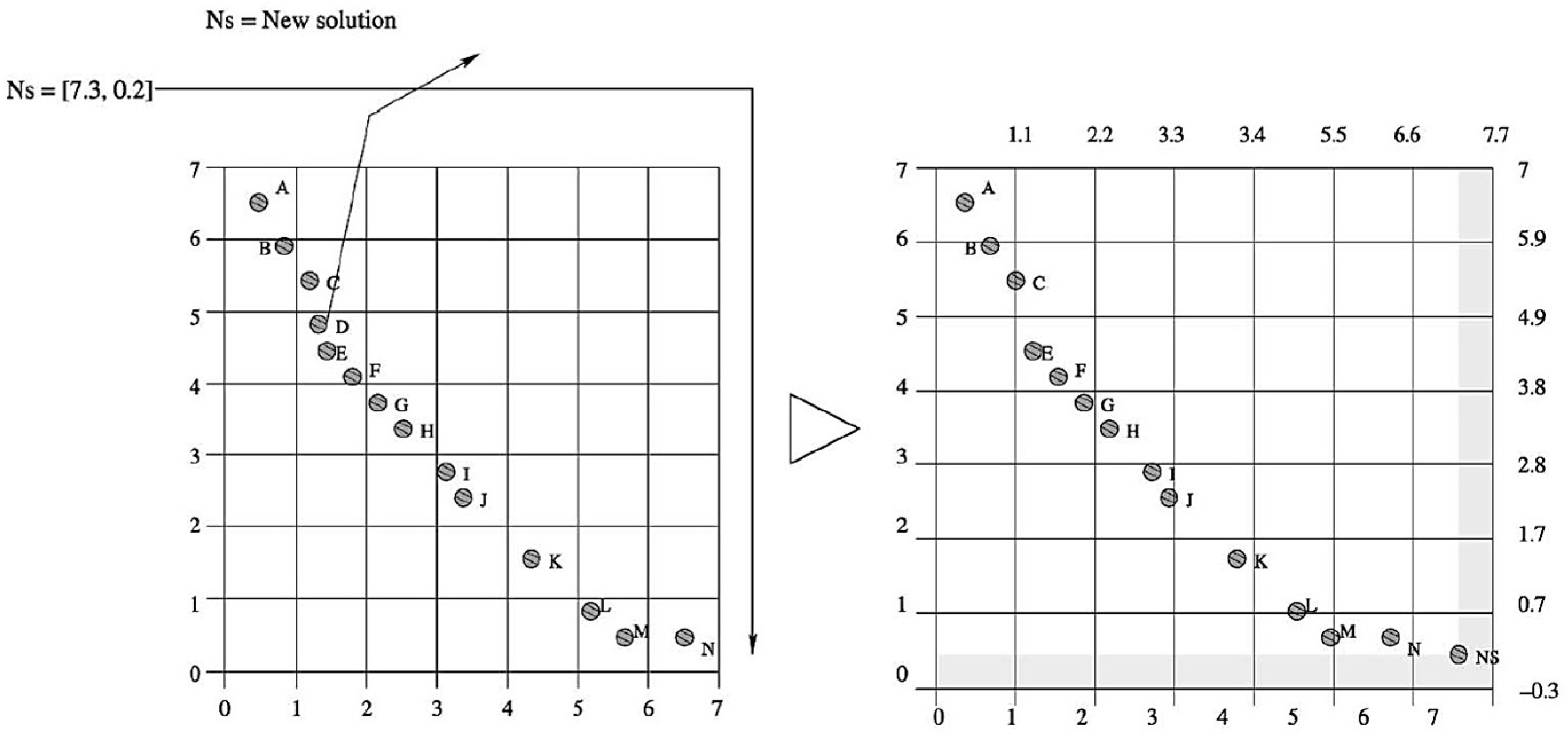
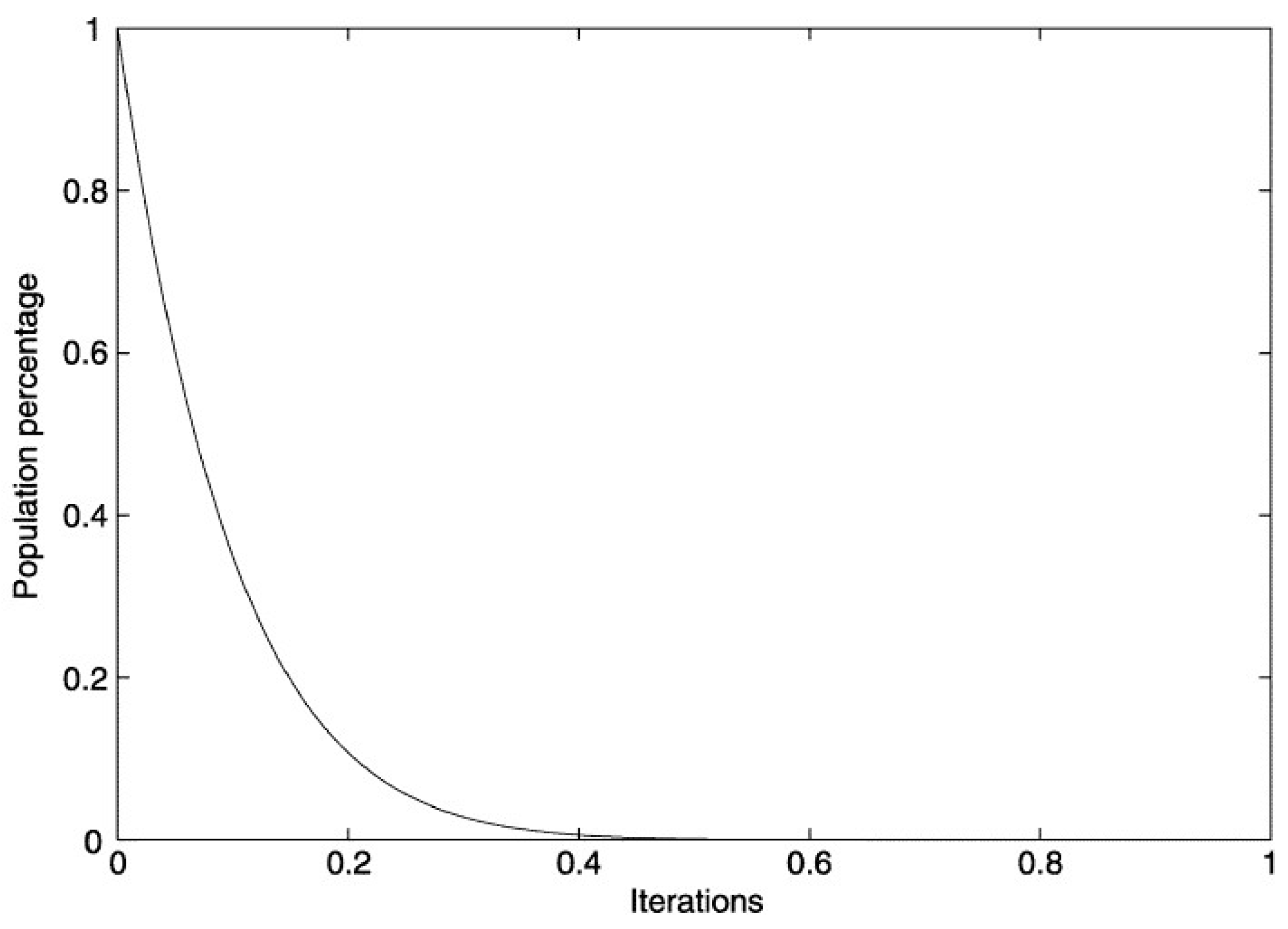

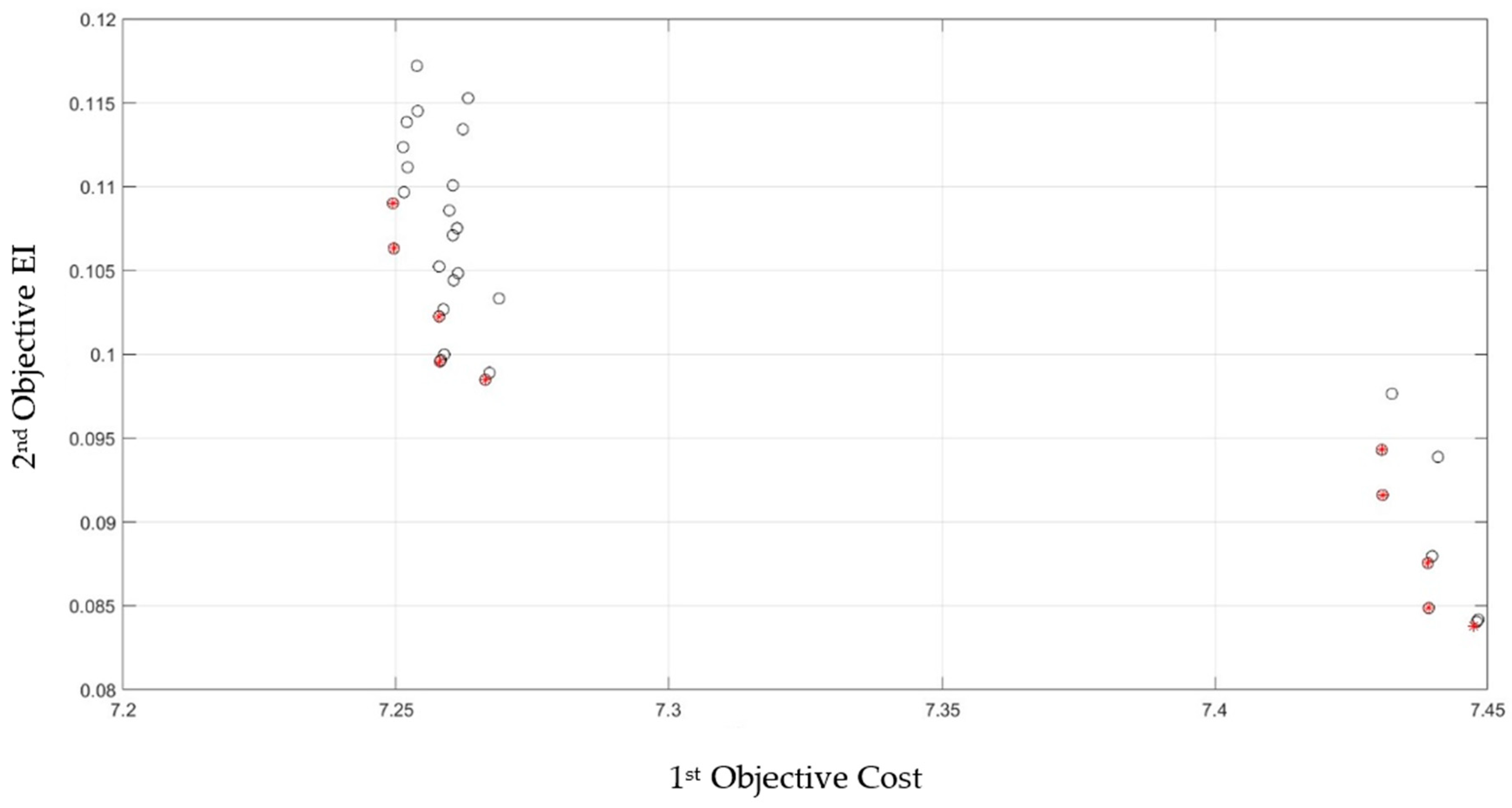
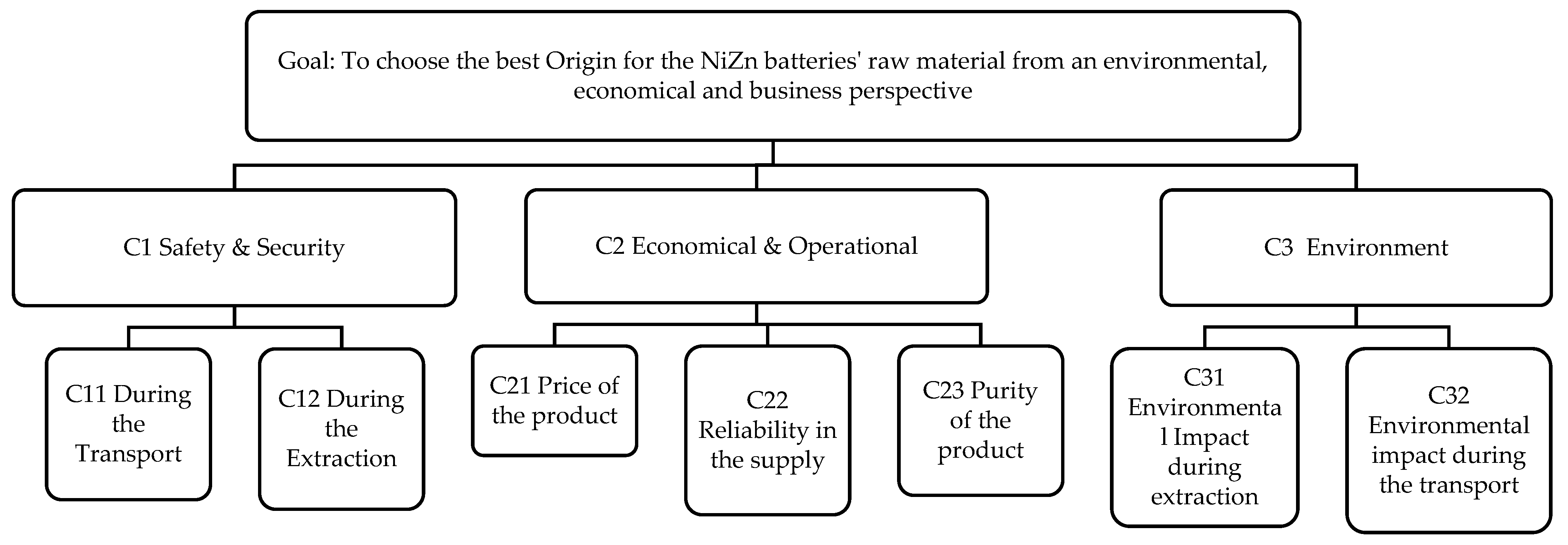
| EUR/kg × km | References about the “Transport Unit Cost” | |
|---|---|---|
| Road | 0.000027 | [62,63,64,65,66,67,68,69,70,71,72] |
| Rail | 0.000036 | [73,74,75,76,77] |
| Ship | 0.0000065 | [72,75,76,77,78] |
| Air | 0.00019 | [71,72,76,77,78,79,80,81] |
| Countries | EUR/kg of Waste |
|---|---|
| USA | 0.147 |
| China | 0.236 |
| India | 0.150 |
| Brazil | 0.174 |
| Japan | 0.205 |
| Country | GARBAGE (kg CO2-e/kg Battery) |
|---|---|
| Brazil | 0.190 |
| China | 0.287 |
| India | 0.176 |
| Japan | 0.292 |
| United States | 0.139 |
| Solutions Serial Number | Mat. 1 | Mat. 2 | Mat. 3 | Mat. 4 | Mat. 5 | Mat. 6 | Mat. 7 | Mat. 8 | Mat. 9 | Mat. 10 | Mat. 11 | Mat. 12 | Mat. 13 | Mat. 14 | Landfill of Residual |
|---|---|---|---|---|---|---|---|---|---|---|---|---|---|---|---|
| 1 | BELGIUM’ | BELGIUM’ | BELGIUM’ | NORWAY’ | RUSSIA’ | UNITED KINGDOM’ | GERMANY’ | SOUTH KOREA’ | BELGIUM’ | UNITED KINGDOM’ | NETHERLANDS’ | CANADA’ | NETHERLANDS’ | BELGIUM’ | UNITED STATES’ |
| 2 | BELGIUM’ | BELGIUM’ | MALAYSIA’ | NORWAY’ | RUSSIA’ | UNITED KINGDOM’ | GERMANY’ | SOUTH KOREA’ | BELGIUM’ | UNITED KINGDOM’ | NETHERLANDS’ | CANADA’ | NETHERLANDS’ | BELGIUM’ | UNITED STATES’ |
| 3 | MALAYSIA’ | BELGIUM’ | BELGIUM’ | NORWAY’ | RUSSIA’ | UNITED KINGDOM’ | GERMANY’ | GERMANY’ | BELGIUM’ | UNITED KINGDOM’ | NETHERLANDS’ | CANADA’ | NETHERLANDS’ | BELGIUM’ | UNITED STATES’ |
| 4 | BELGIUM’ | BELGIUM’ | BELGIUM’ | NORWAY’ | RUSSIA’ | UNITED KINGDOM’ | GERMANY’ | SAUDI ARABIA’ | BELGIUM’ | UNITED KINGDOM’ | NETHERLANDS’ | CANADA’ | NETHERLANDS’ | BELGIUM’ | UNITED STATES’ |
| 5 | MALAYSIA’ | BELGIUM’ | BELGIUM’ | NORWAY’ | RUSSIA’ | UNITED KINGDOM’ | GERMANY’ | SAUDI ARABIA’ | BELGIUM’ | UNITED KINGDOM’ | NETHERLANDS’ | CANADA’ | NETHERLANDS’ | BELGIUM’ | UNITED STATES’ |
| 6 | BELGIUM’ | BELGIUM’ | MALAYSIA’ | NORWAY’ | RUSSIA’ | UNITED KINGDOM’ | GERMANY’ | SAUDI ARABIA’ | BELGIUM’ | UNITED KINGDOM’ | NETHERLANDS’ | CANADA’ | NETHERLANDS’ | BELGIUM’ | UNITED STATES’ |
| 7 | MALAYSIA’ | BELGIUM’ | MALAYSIA’ | NORWAY’ | RUSSIA’ | UNITED KINGDOM’ | GERMANY’ | SAUDI ARABIA’ | BELGIUM’ | UNITED KINGDOM’ | NETHERLANDS’ | CANADA’ | NETHERLANDS’ | BELGIUM’ | UNITED STATES’ |
| 8 | MALAYSIA’ | BELGIUM’ | MALAYSIA’ | NORWAY’ | RUSSIA’ | UNITED KINGDOM’ | GERMANY’ | SOUTH KOREA’ | BELGIUM’ | UNITED KINGDOM’ | NETHERLANDS’ | CANADA’ | NETHERLANDS’ | BELGIUM’ | UNITED STATES’ |
| 9 | BELGIUM’ | BELGIUM’ | BELGIUM’ | NORWAY’ | RUSSIA’ | UNITED KINGDOM’ | GERMANY’ | GERMANY’ | BELGIUM’ | UNITED KINGDOM’ | NETHERLANDS’ | CANADA’ | NETHERLANDS’ | BELGIUM’ | UNITED STATES’ |
| 10 | MALAYSIA’ | BELGIUM’ | BELGIUM’ | NORWAY’ | RUSSIA’ | UNITED KINGDOM’ | GERMANY’ | SOUTH KOREA’ | BELGIUM’ | UNITED KINGDOM’ | NETHERLANDS’ | CANADA’ | NETHERLANDS’ | BELGIUM’ | UNITED STATES’ |
| Serial Number of Individual | Production and Waste Disposal COST (EUR/kg of Battery Mass) | Production and Waste Disposal EI (kg CO2-e/kg of Battery Mass) |
|---|---|---|
| 1 | 7.439 | 0.088 |
| 2 | 7.431 | 0.094 |
| 3 | 7.266 | 0.098 |
| 4 | 7.439 | 0.085 |
| 5 | 7.258 | 0.100 |
| 6 | 7.431 | 0.092 |
| 7 | 7.250 | 0.106 |
| 8 | 7.249 | 0.109 |
| 9 | 7.447 | 0.084 |
| 10 | 7.258 | 0.102 |
| Material | Original Results | Results after 5% Increase | Results after a 5% Decrease | Percentage of Matching Results |
|---|---|---|---|---|
| Material 1 | Belgium | Belgium | Malaysia | 50% |
| Malaysia | Malaysia | Netherlands | ||
| Material 2 | Belgium | Belgium | Belgium | 100% |
| Material 3 | Belgium | Belgium | Belgium | 100% |
| Malaysia | Malaysia | Malaysia | ||
| Material 4 | Norway | Norway | Norway | 100% |
| Material 5 | Russia | Russia | Russia | 100% |
| Material 6 | United Kingdom | United Kingdom | United Kingdom | 100% |
| Material 7 | Germany | Germany | Germany | 100% |
| Material 8 | South Korea | Saudi Arabia | Saudi Arabia | 70% |
| Germany | South Korea | South Korea | ||
| Saudi Arabia | ||||
| Material 9 | Belgium | Belgium | Belgium | 100% |
| Material 10 | United Kingdom | United Kingdom | Italy | 0 |
| Material 11 | Netherlands | Netherlands | Netherlands | 100% |
| Material 12 | Canada | Canada | Canada | 100% |
| Material 13 | Netherlands | Netherlands | Netherlands | 100% |
| Material 14 | Belgium | Belgium | Netherlands | 0 |
| The overall percentage of matching results: | 80% |
| NiZn Raw Materials | List of Countries |
|---|---|
| Material 6 | A1-Canada, A2-China, A3-Japan, A4-United Kingdom, A5-Australia |
| Material 13 | A1-Australia, A2-Canada, A3-Netherlands, A4-South Korea, A5-Spain |
| Material 5 | A1-Chile, A2-Japan, A3-Kazakhstan, A4-Congo, A5-Russia |
| Material 1 | A1-Belgium, A2-Chinese Taipei, A3-Malaysia, A4-Netherlands, A5-South Korea |
| Material 3 | A1-Belgium, A2-China, A3-Germany, A4-Malaysia, A5-United Kingdom |
| Material 8 | A1-Germany, A2-Saudi Arabia, A3-South Korea, A4-United Arab Emirates, A5-USA |
| Materials | Countries Chosen by AI (MOPSO) | Countries Chosen by AHP (Human Factor) | ||
|---|---|---|---|---|
| Country | Weight | Rank | ||
| Material 6 | United Kingdom | Canada | 0.225 | 1 |
| United Kingdom | 0.222 | 2 | ||
| Japan | 0.196 | 3 | ||
| China | 0.191 | 4 | ||
| Australia | 0.167 | 5 | ||
| Material 13 | Netherlands | Netherlands | 0.245 | 1 |
| Spain | 0.231 | 2 | ||
| Australia | 0.191 | 3 | ||
| Canada | 0.185 | 4 | ||
| South Korea | 0.147 | 5 | ||
| Material 5 | Russia | Japan | 0.260 | 1 |
| Chile | 0.254 | 2 | ||
| Kazakhstan | 0.175 | 3 | ||
| Congo | 0.169 | 4 | ||
| Russia | 0.142 | 5 | ||
| Material 1 | Belgium | Belgium | 0.306 | 1 |
| Netherlands | 0.263 | 2 | ||
| South Korea | 0.158 | 3 | ||
| Malaysia | Malaysia | 0.149 | 4 | |
| Chinese Taipei | 0.125 | 5 | ||
| Material 3 | Belgium | Belgium | 0.266 | 1 |
| Germany | 0.226 | 2 | ||
| China | 0.190 | 3 | ||
| Malaysia | United Kingdom | 0.183 | 4 | |
| Malaysia | 0.134 | 5 | ||
| Material 8 | South Korea | Germany | 0.393 | 1 |
| South Korea | 0.180 | 2 | ||
| Germany | USA | 0.173 | 3 | |
| Saudi Arabia | 0.128 | 4 | ||
| Saudi Arabia | United Arab Emirates | 0.126 | 5 | |
| KPIs | Before Applying the Optimization Model | After Applying the Optimization Model | Achieved Results | Target |
|---|---|---|---|---|
| Capital cost (EUR/kWh) | 0.0511 EUR/kWh | 0.0450 EUR/kWh | 11.96% | 20–30% decrease |
| Storage cost (EUR/kWh) | 0.000638 (EUR/kWh) | 0.000562 (EUR/kWh) | 11.96% | 20–35% decrease |
| End-of-life cost (EUR/kWh) | 0.00549 (EUR/kWh) | 0.00529 (EUR/kWh) | 3.65% | 10% decrease |
| Global Warming Potential (kg-CO2-e/MWh) | 7.168 kg-CO2-e/MWh | 5.241 kg-CO2-e/MWh | 26.88% | 15% decrease |
Disclaimer/Publisher’s Note: The statements, opinions and data contained in all publications are solely those of the individual author(s) and contributor(s) and not of MDPI and/or the editor(s). MDPI and/or the editor(s) disclaim responsibility for any injury to people or property resulting from any ideas, methods, instructions or products referred to in the content. |
© 2024 by the authors. Licensee MDPI, Basel, Switzerland. This article is an open access article distributed under the terms and conditions of the Creative Commons Attribution (CC BY) license (https://creativecommons.org/licenses/by/4.0/).
Share and Cite
Malviya, A.K.; Zarehparast Malekzadeh, M.; Santarremigia, F.E.; Molero, G.D.; Villalba Sanchis, I.; Fernández, P.M.; Yepes, V. Optimization of Life Cycle Cost and Environmental Impact Functions of NiZn Batteries by Using Multi-Objective Particle Swarm Optimization (MOPSO). Sustainability 2024, 16, 6425. https://doi.org/10.3390/su16156425
Malviya AK, Zarehparast Malekzadeh M, Santarremigia FE, Molero GD, Villalba Sanchis I, Fernández PM, Yepes V. Optimization of Life Cycle Cost and Environmental Impact Functions of NiZn Batteries by Using Multi-Objective Particle Swarm Optimization (MOPSO). Sustainability. 2024; 16(15):6425. https://doi.org/10.3390/su16156425
Chicago/Turabian StyleMalviya, Ashwani Kumar, Mehdi Zarehparast Malekzadeh, Francisco Enrique Santarremigia, Gemma Dolores Molero, Ignacio Villalba Sanchis, Pablo Martínez Fernández, and Víctor Yepes. 2024. "Optimization of Life Cycle Cost and Environmental Impact Functions of NiZn Batteries by Using Multi-Objective Particle Swarm Optimization (MOPSO)" Sustainability 16, no. 15: 6425. https://doi.org/10.3390/su16156425
APA StyleMalviya, A. K., Zarehparast Malekzadeh, M., Santarremigia, F. E., Molero, G. D., Villalba Sanchis, I., Fernández, P. M., & Yepes, V. (2024). Optimization of Life Cycle Cost and Environmental Impact Functions of NiZn Batteries by Using Multi-Objective Particle Swarm Optimization (MOPSO). Sustainability, 16(15), 6425. https://doi.org/10.3390/su16156425









